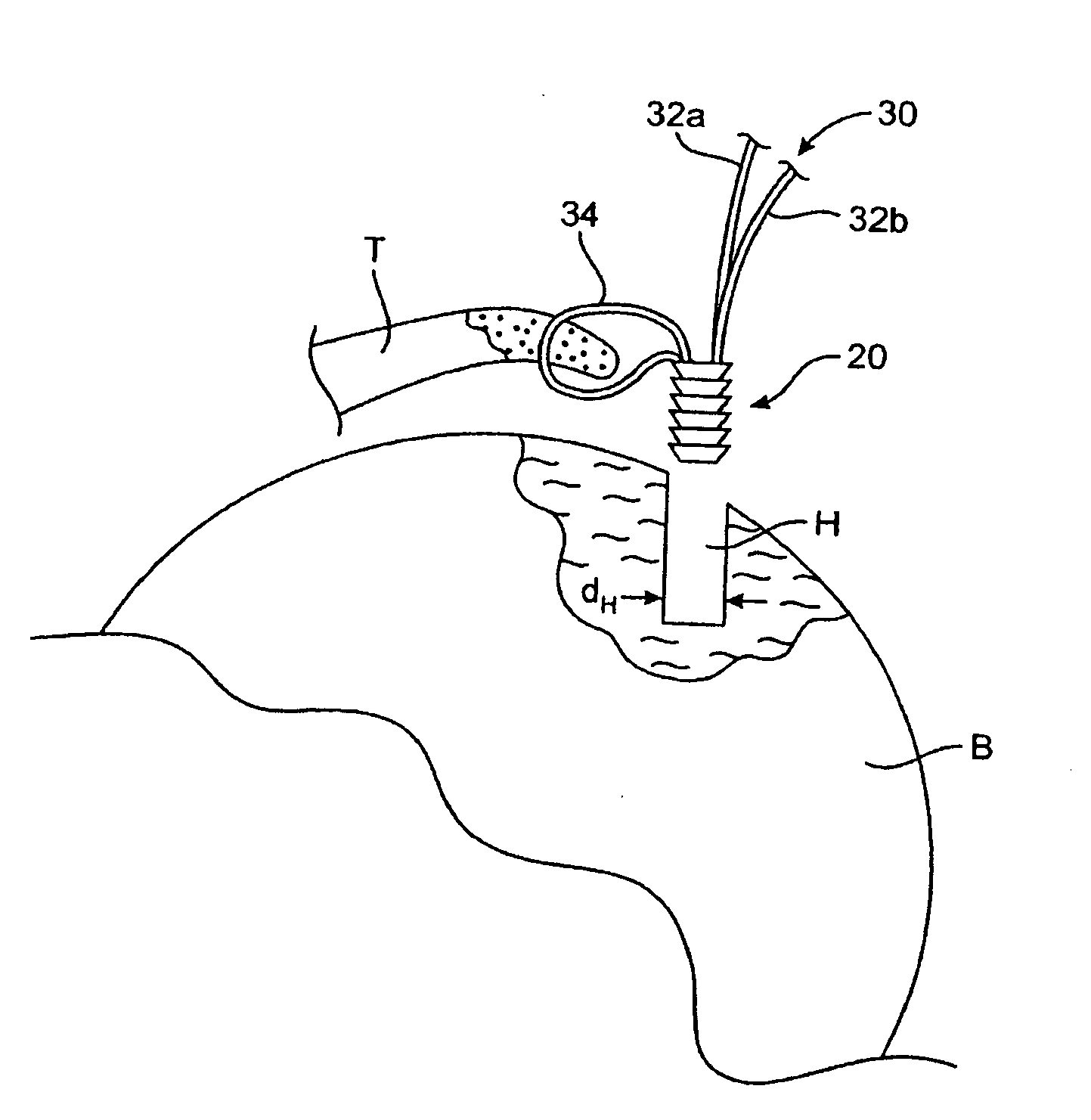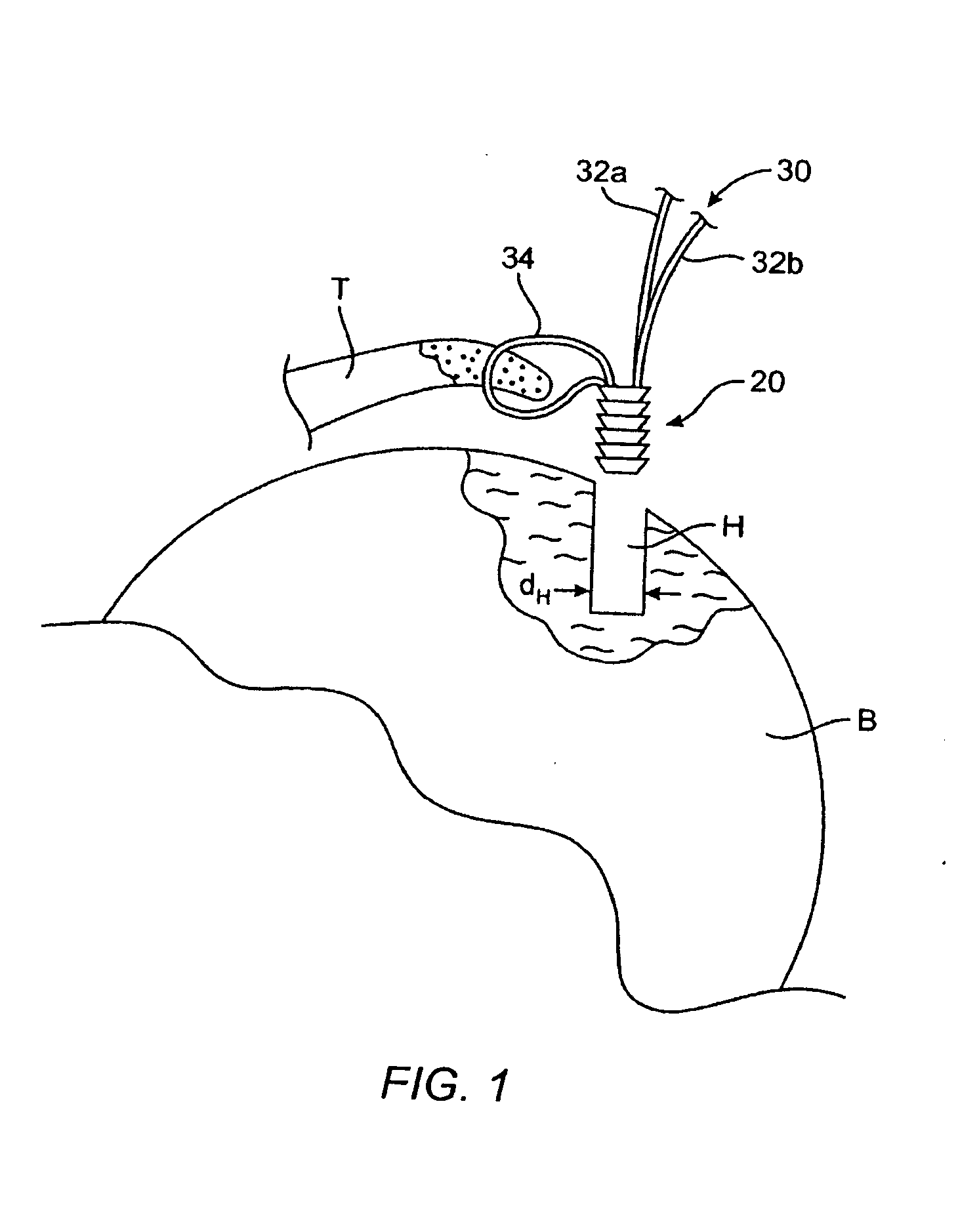Tack anchor systems, bone anchor systems, and methods of use
a technology of bone anchors and anchor systems, applied in the field of bone anchor systems and anchor systems, can solve the problems of adding contamination risk, reducing working space, and tedious procedures, and achieve the effects of enhancing tissue placement, preventing suture slippage, and enhancing tissue placemen
- Summary
- Abstract
- Description
- Claims
- Application Information
AI Technical Summary
Benefits of technology
Problems solved by technology
Method used
Image
Examples
Embodiment Construction
[0173]FIG. 1 is an illustrative schematic of a bone and tissue interface. Tissue T has a torn end and it is desirable to secure the torn end to a section of bone B. In a first step, hole H having diameter dH may be drilled in bone B, as depicted, using generally known bone drilling techniques.
[0174]Bone anchor member 20 may secure tissue T to bone B. Bone anchor member 20 may be used in conjunction with a length of suture 30. Suture 30 has first end 32a and second end 32b. Ends 32a, 32b may be coupled to bone anchor member 20. A central region of suture 30 forms loop 34. Loop 34 may be threaded through a section of tissue T near the torn end of the tissue using generally known threading techniques. In embodiments described herein tissue, hole, and bone refer to T, H and B, respectively, as described in FIG. 1.
[0175]FIG. 2A is a perspective front view of an embodiment of a bone anchor. FIG. 2B is a perspective side view of the bone anchor along line A-A shown in FIG. 2A. FIG. 2C is a...
PUM
 Login to View More
Login to View More Abstract
Description
Claims
Application Information
 Login to View More
Login to View More - R&D
- Intellectual Property
- Life Sciences
- Materials
- Tech Scout
- Unparalleled Data Quality
- Higher Quality Content
- 60% Fewer Hallucinations
Browse by: Latest US Patents, China's latest patents, Technical Efficacy Thesaurus, Application Domain, Technology Topic, Popular Technical Reports.
© 2025 PatSnap. All rights reserved.Legal|Privacy policy|Modern Slavery Act Transparency Statement|Sitemap|About US| Contact US: help@patsnap.com



